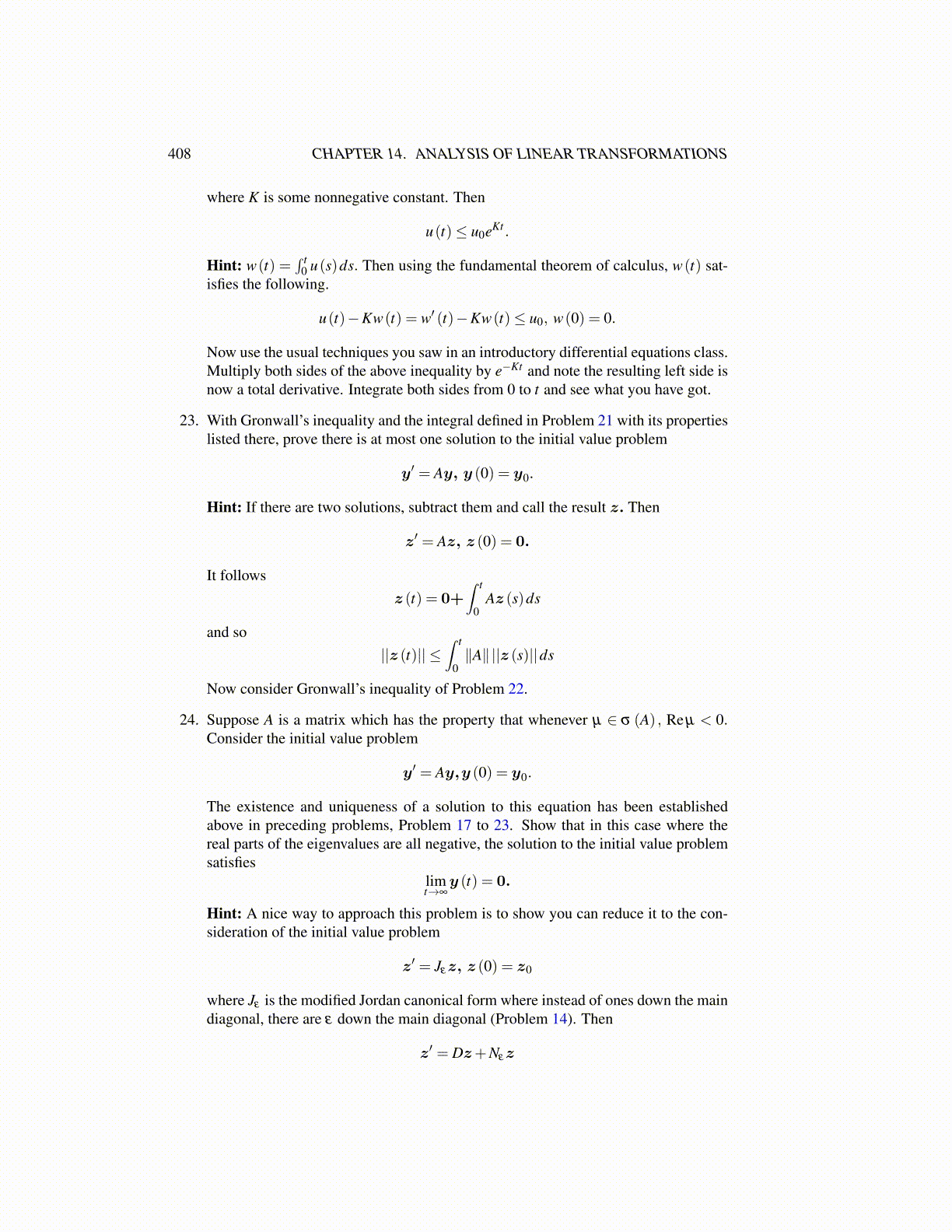
408 CHAPTER 14. ANALYSIS OF LINEAR TRANSFORMATIONS
where K is some nonnegative constant. Then
u(t)≤ u0eKt .
Hint: w(t) =∫ t
0 u(s)ds. Then using the fundamental theorem of calculus, w(t) sat-isfies the following.
u(t)−Kw(t) = w′ (t)−Kw(t)≤ u0, w(0) = 0.
Now use the usual techniques you saw in an introductory differential equations class.Multiply both sides of the above inequality by e−Kt and note the resulting left side isnow a total derivative. Integrate both sides from 0 to t and see what you have got.
23. With Gronwall’s inequality and the integral defined in Problem 21 with its propertieslisted there, prove there is at most one solution to the initial value problem
y′ = Ay, y (0) = y0.
Hint: If there are two solutions, subtract them and call the result z. Then
z′ = Az, z (0) = 0.
It followsz (t) = 0+
∫ t
0Az (s)ds
and so||z (t)|| ≤
∫ t
0∥A∥||z (s)||ds
Now consider Gronwall’s inequality of Problem 22.
24. Suppose A is a matrix which has the property that whenever µ ∈ σ (A) , Re µ < 0.Consider the initial value problem
y′ = Ay,y (0) = y0.
The existence and uniqueness of a solution to this equation has been establishedabove in preceding problems, Problem 17 to 23. Show that in this case where thereal parts of the eigenvalues are all negative, the solution to the initial value problemsatisfies
limt→∞
y (t) = 0.
Hint: A nice way to approach this problem is to show you can reduce it to the con-sideration of the initial value problem
z′ = Jεz, z (0) = z0
where Jε is the modified Jordan canonical form where instead of ones down the maindiagonal, there are ε down the main diagonal (Problem 14). Then
z′ = Dz+Nεz